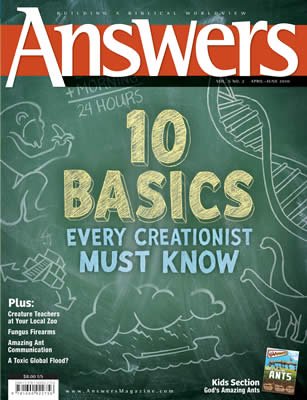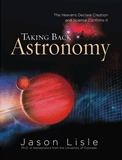Distant Starlight
Can stars be millions of light years away if God created them only 6,000 years ago? We have much to learn, but several astrophysical models can account for this. Interestingly, the big bang has a major light-travel problem of its own.
Sometimes Christians are reluctant to discuss the age of the universe. The Bible states that God created in six days, and its genealogies clearly indicate that this took place only a few thousand years ago. But some people reason, “Hasn’t science demonstrated that it would take billions of years for the light from the farthest galaxies to reach the earth? Doesn’t this disprove the Genesis account or force us to interpret the words differently?”
Not at all.
There are several known ways that light can travel vast distances in a relatively short period of time. In fact, Einstein tells us that, if a person could travel at the speed of light, then the trip would be completely instantaneous (from his or her point of view). It takes literally no time at all to travel from a distant galaxy to the earth as far as the light is concerned.
There are several ways to accomplish this instant trip from the earth’s point of view as well. Time-dilation models, for example, use Einstein’s physics to get light here in a short period of time, at least from the earth’s perspective.
“God made the stars . . . [on] the fourth day.” Genesis 1:16,19
Perhaps most promising is a newer model that uses an alternative way to synchronize two clocks that are far apart. Much like a plane can leave Kentucky at 4:00 and arrive in Colorado at 4:00 because of different time zones, so starlight could arrive on earth on Day Four, regardless of how far away the star is.1
We should also remember that God is not limited to natural methods as we are.
Ironically, the leading secular alternative to the Bible (the big bang) has a light-travel time problem of its own. Known as the “horizon problem,” the big bang is unable to get light from one side of the universe to the other within its own billions-of-years timeframe.2 To alleviate this problem, big bang supporters must arbitrarily add another hypothesis like “inflation” (which has problems of its own).
Even if our current creation models turn out to be wrong, there is no need to be embarrassed by distant starlight. For we rely upon the revealed Word of God as our starting point. Unlike the shifting opinions of men, such a foundation cannot fail. It boldly declares that on Day Four “He made the stars also” (Genesis 1:16).
For Additional Information
Answers Magazine
April – June 2010
Debates about evolution and attacks on Scripture seem endless. But why should we be ashamed of truth? In this issue you’ll find basic truths revealed in Genesis and confirmed by science—bare-bones essentials that all Christians need. Also look for fascinating science news, ideas for a faith-building creation “stay-cation” to your local zoo, and semi-technical articles to strengthen your faith and challenge your mind!
Browse Issue SubscribeFootnotes
- See the upcoming Answers Research Journal article on starlight by the author, perhaps available by late summer.
- Yet such transport is necessary within the big bang model in order to cause the uniform heat that we find today in the universe’s cosmic microwave background.
Recommended Resources

Answers in Genesis is an apologetics ministry, dedicated to helping Christians defend their faith and proclaim the good news of Jesus Christ.
- Customer Service 800.778.3390
- © 2024 Answers in Genesis






